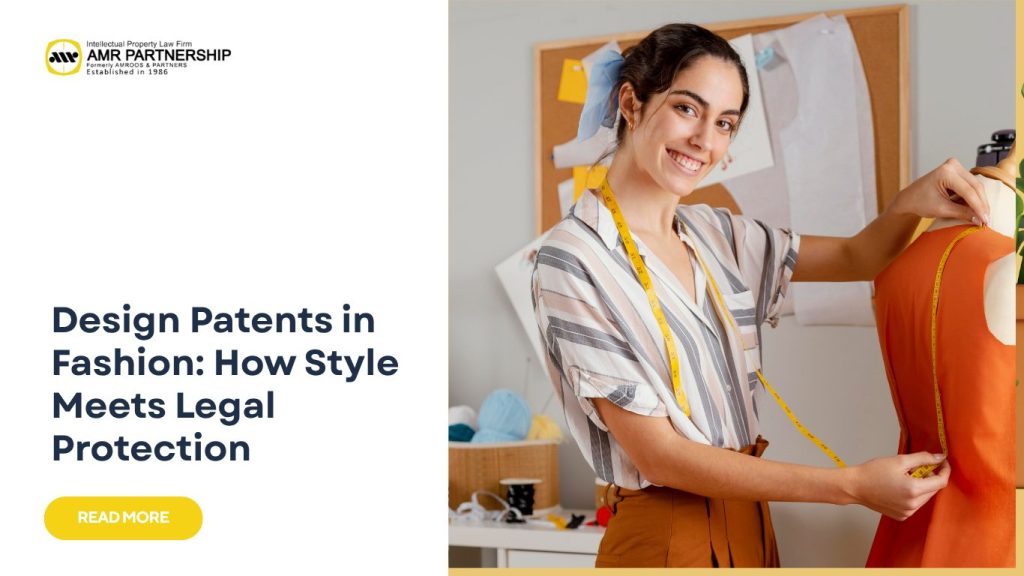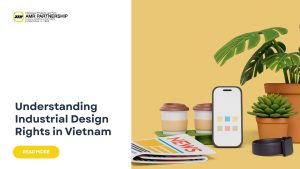
In the fast-evolving fashion industry, creativity isn’t just about trends—it’s about protection. Design Patents have become one of the most valuable tools for securing a designer’s visual identity. Many fashion businesses focus solely on trademarks or copyrights, but the true power often lies in protecting the shape, pattern, and aesthetic appeal of your products. Through proper registration and expert guidance from AMR.co.id, you can safeguard your designs from imitation and secure long-term value for your brand.
READ MORE: How Long Is Intellectual Property Valid For? Duration of Copyright, Patents, and Trademarks
Why Fashion Needs Legal Protection Beyond Logos
In fashion, what catches the eye sells. Yet, without legal protection, what attracts customers can easily be copied. Many fashion creators still rely solely on brand names and logos to protect their products. However, the appearance—the form, curve, or even texture—is often the real essence of a product’s uniqueness.
Design Patents allow you to protect that uniqueness. A distinctive handbag shape, a creative eyewear frame, or an intricate shoe silhouette can all be registered under a design protection system. In Indonesia, this protection falls under industrial design rights, part of the broader intellectual property (IP) framework.
Without it, imitation runs wild, especially in today’s fast digital market where replication is just a few clicks away. Legal protection helps ensure that your design remains your signature, not someone else’s replica. For emerging designers, this is not just about ownership—it’s about sustainability and fair competition in a growing industry.
What Exactly Are Design Patents?
To put it simply, Design Patents protect the visual appearance of a product—not how it works, but how it looks. Unlike trademarks (which protect logos or brand names) or copyrights (which protect artistic or literary works), design protection focuses on shape, contour, surface decoration, or color combination that makes your product visually unique.
In short, design protection covers:
- Product shape or configuration (e.g., bag structure, frame outlines)
- Ornamentation or patterns (e.g., surface texture or aesthetic lines)
- Combination of colors or proportions giving a distinct appearance
A design patent doesn’t protect the function of the product but rather its external expression. Think of it as a shield for your product’s identity—ensuring that no one can market a look-alike design to ride on your creativity.
In Indonesia, applications are filed with DJKI (Directorate General of Intellectual Property). The process involves showing that your design is new and original, meaning it hasn’t been publicly disclosed anywhere before your application. If you’re planning to market globally, international protection is available through the Hague System, allowing you to register your design across multiple countries with one application.
READ MORE: What Content Creators Should Know About Intellectual Property Infringement in the Digital Age
How Design Patents Shape the Fashion Industry
In the world of fashion, visuals are everything. A unique design can define an entire product line, influencing brand perception and consumer behavior. With so many trends emerging daily, originality is both the challenge and the opportunity.
Here’s how design protection makes a difference:
- Builds brand identity, your visual designs become part of your brand story, helping customers recognize your style instantly.
- Prevents imitation, legal protection acts as a barrier for copycat manufacturers looking to profit from your creativity.
- Adds business value, registered designs are intangible assets that can be licensed, sold, or used as collateral.
- Encourages innovation, hen designers know their ideas are protected, they’re more confident to create boldly.
A study from the World Intellectual Property Organization (wipo.int) shows that markets with strong design protection systems experience higher investment in creative industries. That means, for the Indonesian fashion sector, Design Patents could be the key to global competitiveness.
READ MORE: What Companies Have Intellectual Property? Real-World Examples of Businesses with Valuable IP Assets
The Growing Challenge, Copycat Designs Online
As e-commerce expands, so do the risks. Online marketplaces are now flooded with look-alike products that mimic the form and aesthetics of genuine designs. These replicas often sell at lower prices, hurting original creators and diminishing brand reputation.
Many sellers claim to make “generic” designs, but if a product’s visual elements are identical to a registered one, it’s a legal infringement. Unfortunately, marketplaces often struggle to verify these violations because they rely on official documentation—which is where a registered Design Patent becomes your strongest proof.
Common online infringement issues include:
- Replication of product shapes or patterns without consent
- Slight modifications made to avoid obvious copying claims
- Unauthorized use of product photos or renderings from designers
For designers and fashion entrepreneurs, having your designs officially registered is a proactive defense. It gives you the right to take action—whether through takedown requests, cease-and-desist letters, or even formal litigation when necessary.
READ MORE: What Are Included in Intellectual Property? A Comprehensive List for Businesses and Creators
The Legal Side, How to Protect Your Design
Protecting your design isn’t complicated, but it does require precision. Here’s a simplified overview of how it works:
- Document your design, keep detailed sketches, renderings, and 3D models.
- Ensure novelty, conduct a novelty search to confirm your design hasn’t been registered elsewhere.
- File for registration, apply with DJKI or use the Hague System for broader protection.
- Monitor and enforce, once registered, track potential infringements online and offline.
Legal consultation is essential to avoid rejection or conflict with existing designs. Firms like AMR Partnership assist clients from the conceptual stage, helping them ensure originality and compliance with IP standards.
Having a registered Design Patent doesn’t just prevent imitation—it strengthens your market credibility and increases your brand’s asset value. For those planning to scale, AMR’s consultation packages start from an accessible range, depending on the complexity of your design and filing scope.
For pricing and detailed guidance, you can directly reach out via WhatsApp or Instagram below.
READ MORE: What Are the Seven Types of Intellectual Property Rights? A Full Breakdown
Why Enforcement Is Still Tricky
Even with registration, enforcement of Design Patents in fashion remains challenging. Unlike trademarks, where logos are easy to identify, design infringement often involves subtle differences that complicate legal action.
Some challenges include:
- Proof of similarity, determining whether two designs are substantially identical can be subjective.
- Public perception, many consumers aren’t aware that visual designs can be legally protected.
- Digital replication, 3D modeling and AI tools make copying easier and faster than ever.
However, awareness is improving. More designers and brands in Indonesia are taking proactive steps to register their designs early, understanding that enforcement is only possible when rights are properly secured. Legal experts can help bridge that gap—turning complex regulations into actionable protection strategies.
The Role of IP Law Firms and Consultants
Intellectual Property law firms like AMR Partnership play a pivotal role in helping clients navigate the design protection process. From conducting novelty searches to preparing documentation and representing clients in infringement disputes, professional guidance ensures that every step aligns with current regulations.
What AMR Partnership Offers:
- Comprehensive IP protection covering Design Patents, Trademarks, Copyrights, and Plant Variety Protection (PVP).
- Strategic consultation to identify which IP type best fits your product.
- Filing and registration assistance, both domestically and internationally.
- Legal enforcement and dispute resolution services.
With a team experienced in handling both local and global IP portfolios, AMR ensures your creative and commercial interests are protected from idea to market launch.
Legal support ensures that your design journey—from sketch to store shelf—stays safe and protected.
READ MORE: How to Register Patent Indonesia
Building a Culture of Respect for Design
The fashion industry thrives on creativity, but creativity flourishes best when it’s respected. By recognizing the power of Design Patents, Indonesia’s designers can elevate their craft from mere artistry to legitimate business assets.
Protecting designs is not about restricting creativity—it’s about empowering it. When designers and businesses invest in proper IP protection, they not only secure their products but also build trust with consumers and partners.
If you’re ready to secure your creations, get in touch with the professionals at AMR.co.id. Their tailored consultation packages start from accessible rates, designed to match the scale and needs of your business. Protect your vision, secure your design, and build your brand with confidence—because in fashion, style deserves legal protection through Design Patents.
- Phone (Hunting): +62-21-29036668
- Fax: +62-21-29036672 to 75
- WhatsApp Customer Service: Click here to chat
- Instagram: @amrpartnership
- TikTok: @amr.partnership
- Facebook: Law Firm AMR Partnership
- Official Website: www.amr.co.id






